NEW YORK TIMES BESTSELLER • A “thrilling and superbly crafted” (The Wall Street Journal) account of the most momentous voyage of the Age of Exploration, which culminated in Captain James Cook’s death in Hawaii, and left a complex and controversial legacy still debated to this day. One of The New York Times Book Review’s 10 Best Books of the Year A BEST BOOK OF THE YEAR: THE NEW YORK TIMES, TIME, THE ECONOMIST, NPR, THE NEW YORKER, THE SMITHSONIAN, AND KIRKUS REVIEWS “In this masterly history, Sides tracks the 18th-century English naval officer James Cook’s third and final voyage across the globe, painting a vivid and propulsive portrait."—The New York Times Book Review On July 12th, 1776, Captain James Cook, already lionized as the greatest explorer in British history, set off on his third voyage in his ship the HMS Resolution. Two-and-a-half years later, on a beach on the island of Hawaii, Cook was killed in a conflict with native Hawaiians. How did Cook, who was unique among captains for his respect for Indigenous peoples and cultures, come to that fatal moment? Hampton Sides’ bravura account of Cook’s last journey both wrestles with Cook’s legacy and provides a thrilling narrative of the titanic efforts and continual danger that characterized exploration in the 1700s. Cook was renowned for his peerless seamanship, his humane leadership, and his dedication to science. On previous expeditions, Cook mapped huge swaths of the Pacific, including the east coast of Australia, and initiated first European contact with numerous peoples. He treated his crew well and endeavored to learn about the societies he encountered with curiosity and without judgment. Yet something was different on this last voyage. Cook became mercurial, resorting to the lash to enforce discipline, and led his two vessels into danger time and again. Uncharacteristically, he ordered violent retaliation for perceived theft on the part of native peoples. This may have had something to do with his secret orders, which were to chart and claim lands before Britain’s imperial rivals could, and to discover the fabled Northwest Passage. Whatever Cook’s intentions, his scientific efforts were the sharp edge of the colonial sword, and the ultimate effects of first contact were catastrophic for Indigenous people around the world. The tensions between Cook’s overt and covert missions came to a head on the shores of Hawaii. His first landing there was harmonious, but when Cook returned after mapping the coast of the Pacific Northwest and Alaska, his exploitative treatment of the Hawaiians led to the fatal encounter. At once a ferociously-paced story of adventure on the high seas and a searching examination of the complexities and consequences of the Age of Exploration, THE WIDE WIDE SEA is a major work from one of our finest narrative nonfiction writers.
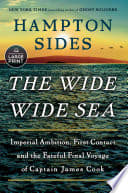
Average Rating
Informations
About the author
Hampton Sides
Author
Wade Hampton Sides is an American historian, author and journalist. He is the author of Hellhound on His Trail, Ghost Soldiers, Blood and Thunder, On Desperate Ground, and other bestselling works of narrative history and literary non-fiction.
The Wide Wide Sea
by Hampton Sides
Books Like The Wide Wide Sea
If you're looking for books similar to The Wide Wide Sea, here are some recommendations based on themes, tone, and narrative style.
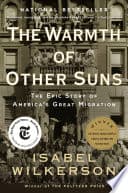
The Warmth of Other Suns
Isabel Wilkerson
A powerful narrative of the Great Migration of African Americans from the South to northern and western cities. Wilkerson provides a deeply researched and compassionate account of human movement and cultural transformation. The book reveals complex historical narratives and human experiences. It shares Sides' approach to nuanced historical storytelling.

The Warmth of Other Suns
Isabel Wilkerson
A powerful narrative of the Great Migration of African Americans from the South to northern and western cities. Wilkerson provides a deeply researched and compassionate account of human movement and cultural transformation. The book reveals complex historical narratives and human experiences. It shares Sides' approach to nuanced historical storytelling.
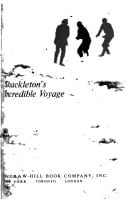
Endurance
Alfred Lansing
The extraordinary story of Ernest Shackleton's Antarctic expedition and miraculous survival. Lansing chronicles the incredible journey of exploration, survival, and leadership in extreme conditions. The book reveals human resilience and the psychological challenges of maritime exploration. It shares thematic similarities with Sides' examination of historical voyages and human endurance.

Guns, Germs, and Steel
Jared Diamond
A groundbreaking exploration of how geography and environment shaped human societies and technological development. Diamond provides a comprehensive analysis of historical processes of cultural interaction and technological innovation. The book offers a broad perspective on human exploration and cultural encounters. It shares Sides' interest in complex historical narratives.
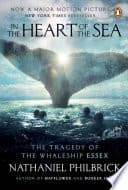
In the Heart of the Sea
Nathaniel Philbrick
A gripping historical narrative about the whaling ship Essex, which was attacked by a sperm whale in 1820 and inspired Herman Melville's Moby-Dick. The book explores maritime survival, human endurance, and the brutal realities of 19th-century ocean exploration. Philbrick meticulously reconstructs the crew's harrowing experience of shipwreck and cannibalism. It offers a profound examination of human nature under extreme conditions, similar to Sides' exploration of Cook's voyages.
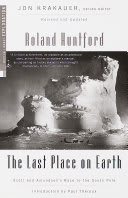
The Last Place on Earth
Roland Huntford
A comparative narrative of the race to the South Pole between Roald Amundsen and Robert Falcon Scott. Huntford provides a detailed examination of exploration, leadership, and national rivalry. The book reveals the human drama and strategic complexities of polar exploration. It offers insights similar to Sides' nuanced approach to historical narratives.

The Immortal Life of Henrietta Lacks
Rebecca Skloot
A powerful narrative exploring medical ethics, race, and scientific discovery. Skloot tells the story of Henrietta Lacks, whose cells became crucial to medical research without her knowledge. The book reveals complex intersections of science, ethics, and human experience. It shares Sides' approach to revealing hidden historical narratives.
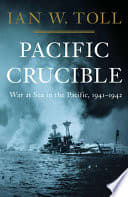
Pacific Crucible
Ian Toll
A comprehensive account of the naval warfare in the Pacific during World War II. Toll's narrative captures the strategic complexities and human drama of maritime conflict. The book provides deep insights into exploration, cultural encounters, and military strategy. Like Sides' work, it examines the intersection of human ambition, technological innovation, and cultural confrontation.
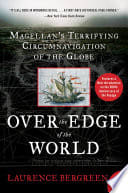
Over the Edge of the World
Laurence Bergreen
A comprehensive narrative of Magellan's historic circumnavigation of the globe. Bergreen explores the challenges, dangers, and cultural encounters of early maritime exploration. The book reveals the human drama behind one of history's most significant voyages. Like Sides' work, it examines the complex interactions between European explorers and indigenous populations.

1491
Charles C. Mann
A revolutionary account of the Americas before Columbus, challenging traditional historical narratives. Mann provides a detailed exploration of indigenous societies and their complexity. The book reveals the sophisticated cultures that existed before European contact. It shares Sides' nuanced approach to understanding historical interactions.
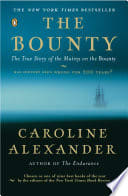
The Bounty
Caroline Alexander
A detailed account of the famous mutiny on the HMS Bounty, exploring the complex relationships between Captain Bligh and his crew. Alexander provides a nuanced historical narrative about maritime exploration and human conflict. The book delves into leadership, cultural misunderstandings, and the psychological pressures of long sea voyages. It offers insights similar to Sides' exploration of Cook's complex legacy.
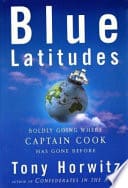
Blue Latitudes
Tony Horwitz
A modern exploration of Captain Cook's voyages, blending historical research with contemporary travel writing. Horwitz retraces Cook's journeys, examining the lasting impact of European exploration. The book provides a personal and historical perspective on cultural encounters. Like Sides' work, it offers a complex view of exploration and its consequences.
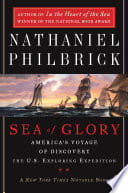
Sea of Glory
Nathaniel Philbrick
An account of the U.S. Exploring Expedition of 1838-1842, a massive scientific and geographical voyage around the world. Philbrick chronicles the complex dynamics of exploration, scientific discovery, and maritime adventure. The book reveals the human stories behind significant geographical expeditions. It shares thematic elements with Sides' exploration of Cook's voyages.
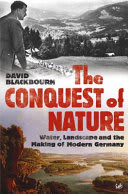
The Conquest of Nature
David Blackbourn
An exploration of how humans have transformed landscapes through engineering and exploration. Blackbourn examines the complex relationship between human ambition and natural environments. The book reveals the broader historical context of human exploration and transformation. It shares thematic similarities with Sides' examination of exploration's broader implications.
No account connected — sign in to comment.
